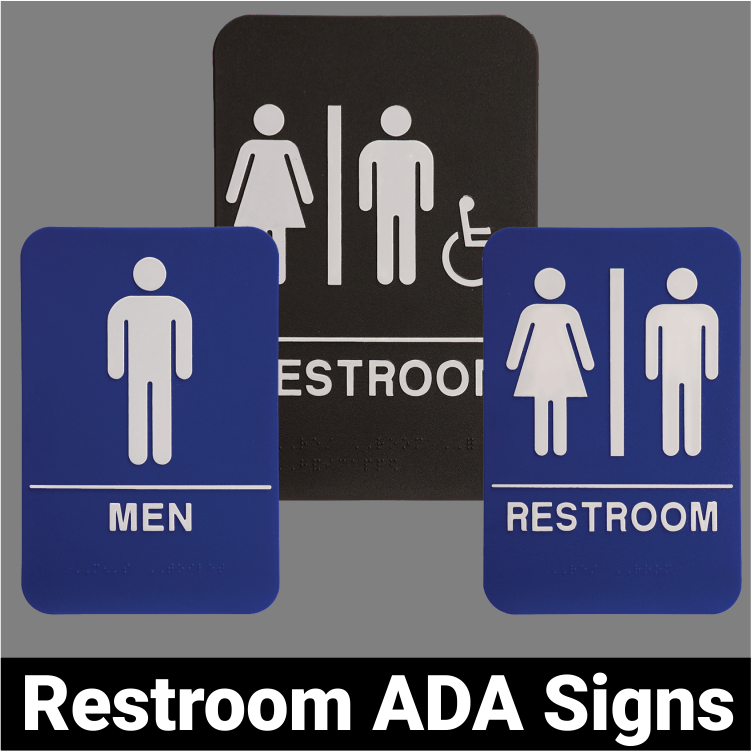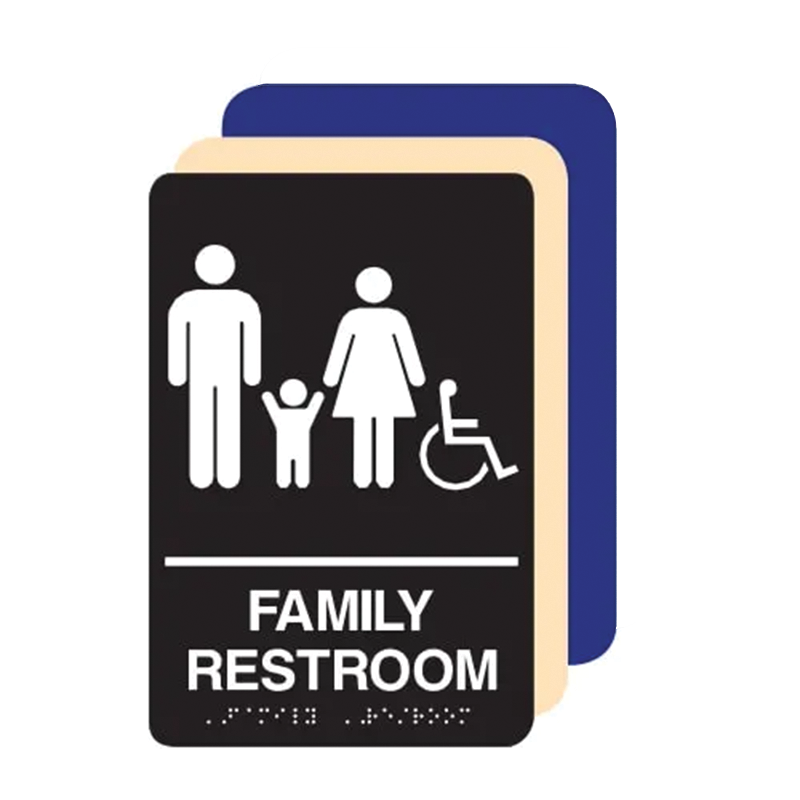A Comprehensive Overview to Picking the Right ADA Signs
A Comprehensive Overview to Picking the Right ADA Signs
Blog Article
Discovering the Secret Attributes of ADA Indicators for Boosted Access
In the realm of availability, ADA signs offer as silent yet powerful allies, making certain that spaces are inclusive and accessible for individuals with specials needs. By incorporating Braille and tactile components, these signs break obstacles for the visually impaired, while high-contrast shade systems and clear typefaces cater to diverse aesthetic demands.
Significance of ADA Conformity
Ensuring compliance with the Americans with Disabilities Act (ADA) is vital for fostering inclusivity and equal accessibility in public rooms and workplaces. The ADA, passed in 1990, mandates that all public centers, employers, and transportation services suit people with disabilities, ensuring they take pleasure in the same legal rights and possibilities as others. Conformity with ADA standards not only satisfies lawful commitments but likewise improves a company's online reputation by demonstrating its commitment to diversity and inclusivity.
One of the vital elements of ADA compliance is the implementation of accessible signs. ADA indications are developed to ensure that people with handicaps can quickly navigate via spaces and structures.
In addition, sticking to ADA policies can mitigate the threat of prospective fines and lawful effects. Organizations that fall short to abide by ADA guidelines may face legal actions or fines, which can be both damaging and monetarily troublesome to their public image. Therefore, ADA compliance is important to fostering a fair environment for everyone.
Braille and Tactile Aspects
The unification of Braille and tactile elements into ADA signs personifies the principles of availability and inclusivity. It is commonly placed below the matching message on signs to make certain that people can access the details without visual assistance.
Tactile aspects extend beyond Braille and include elevated personalities and icons. These elements are developed to be discernible by touch, allowing people to recognize area numbers, bathrooms, departures, and other crucial areas. The ADA establishes certain guidelines concerning the size, spacing, and positioning of these tactile elements to maximize readability and ensure consistency throughout different environments.

High-Contrast Color Pattern
High-contrast color design play a pivotal function in enhancing the presence and readability of ADA signage for people with visual problems. These plans are important as they make the most of the distinction in light reflectance between message and background, making sure that signs are conveniently discernible, also from a range. The Americans with Disabilities Act (ADA) mandates the use of details color contrasts to suit those with restricted vision, making it a crucial element of compliance.
The effectiveness of high-contrast shades depends on their capability to stand out in different lights conditions, consisting of poorly lit environments and locations with glow. Generally, dark message on a light history or light text on a dark background is used to attain optimal contrast. As an example, black message on a white or yellow history supplies a plain visual difference that helps in quick recognition and comprehension.

Legible Fonts and Text Dimension
When taking into consideration the style of ADA signage, the choice of understandable font styles and appropriate text size can not be overstated. These elements are important for ensuring that indications come to individuals with aesthetic impairments. The Americans with Disabilities Act (ADA) mandates that typefaces need to be sans-serif and not italic, oblique, script, very ornamental, or of unusual form. These demands aid guarantee that the text is easily legible from a range and that the personalities are distinguishable to varied audiences.
The size of the text likewise plays a pivotal function in ease of access. According to ADA guidelines, the minimal text height should be 5/8 inch, and it must boost proportionally with viewing range. This is specifically essential in public spaces where signage demands to be read swiftly and properly. Consistency in message size adds to a cohesive visual experience, assisting browse this site individuals in browsing environments effectively.
Furthermore, spacing in between letters and lines is important to readability. Sufficient spacing avoids characters from showing up crowded, boosting readability. By sticking to these standards, developers can substantially enhance availability, making sure that signage offers its intended purpose for all people, regardless of their visual capacities.
Efficient Positioning Methods
Strategic positioning of ADA signage is important for maximizing availability and making sure compliance with lawful standards. Correctly positioned signs direct people with specials needs successfully, facilitating navigation in public rooms. Secret considerations include height, exposure, and closeness. ADA guidelines stipulate that indications must be installed at a height in between 48 to 60 inches from the ground to guarantee they are within the line of view for both standing and seated people. This typical height array is critical for inclusivity, allowing mobility visit the site device users and people of differing elevations to gain access to info easily.
In addition, signs should be put beside the latch side of doors to permit simple recognition prior to access. This placement helps individuals situate rooms and spaces without blockage. In situations where there is no door, signs must be located on the closest nearby wall surface. Uniformity in indication placement throughout a facility boosts predictability, decreasing confusion and improving overall individual experience.

Final Thought
ADA indications play an essential duty in advertising availability by incorporating features that resolve the requirements of individuals with impairments. Incorporating Braille and tactile components makes sure crucial details is available to the aesthetically impaired, while high-contrast color design and readable sans-serif fonts enhance visibility throughout numerous illumination problems. Reliable positioning techniques, such as ideal installing elevations and calculated places, better assist in navigating. These elements jointly cultivate a comprehensive setting, emphasizing the relevance of ADA conformity in guaranteeing equivalent gain access to for all.
In the world of availability, ADA signs serve discover here as quiet yet powerful allies, ensuring that rooms are inclusive and accessible for people with impairments. The ADA, established in 1990, mandates that all public facilities, companies, and transport services accommodate people with specials needs, guaranteeing they delight in the exact same civil liberties and opportunities as others. ADA Signs. ADA indications are made to ensure that individuals with handicaps can easily navigate through spaces and buildings. ADA guidelines state that indicators must be mounted at a height between 48 to 60 inches from the ground to guarantee they are within the line of sight for both standing and seated people.ADA indicators play an important role in promoting ease of access by integrating attributes that attend to the demands of individuals with specials needs
Report this page